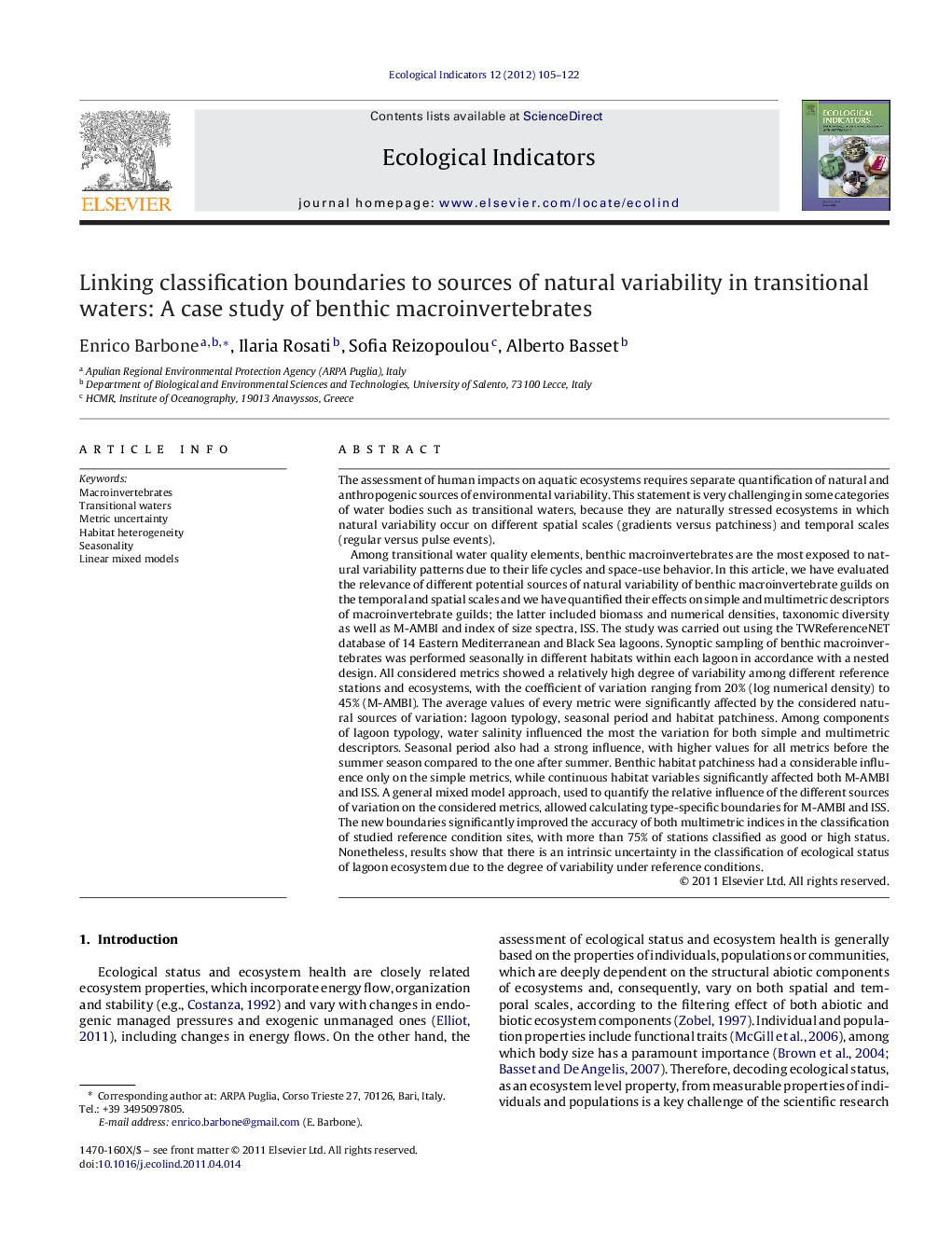| Article ID | Journal | Published Year | Pages | File Type |
|---|---|---|---|---|
| 4373840 | Ecological Indicators | 2012 | 18 Pages |
The assessment of human impacts on aquatic ecosystems requires separate quantification of natural and anthropogenic sources of environmental variability. This statement is very challenging in some categories of water bodies such as transitional waters, because they are naturally stressed ecosystems in which natural variability occur on different spatial scales (gradients versus patchiness) and temporal scales (regular versus pulse events).Among transitional water quality elements, benthic macroinvertebrates are the most exposed to natural variability patterns due to their life cycles and space-use behavior. In this article, we have evaluated the relevance of different potential sources of natural variability of benthic macroinvertebrate guilds on the temporal and spatial scales and we have quantified their effects on simple and multimetric descriptors of macroinvertebrate guilds; the latter included biomass and numerical densities, taxonomic diversity as well as M-AMBI and index of size spectra, ISS. The study was carried out using the TWReferenceNET database of 14 Eastern Mediterranean and Black Sea lagoons. Synoptic sampling of benthic macroinvertebrates was performed seasonally in different habitats within each lagoon in accordance with a nested design. All considered metrics showed a relatively high degree of variability among different reference stations and ecosystems, with the coefficient of variation ranging from 20% (log numerical density) to 45% (M-AMBI). The average values of every metric were significantly affected by the considered natural sources of variation: lagoon typology, seasonal period and habitat patchiness. Among components of lagoon typology, water salinity influenced the most the variation for both simple and multimetric descriptors. Seasonal period also had a strong influence, with higher values for all metrics before the summer season compared to the one after summer. Benthic habitat patchiness had a considerable influence only on the simple metrics, while continuous habitat variables significantly affected both M-AMBI and ISS. A general mixed model approach, used to quantify the relative influence of the different sources of variation on the considered metrics, allowed calculating type-specific boundaries for M-AMBI and ISS. The new boundaries significantly improved the accuracy of both multimetric indices in the classification of studied reference condition sites, with more than 75% of stations classified as good or high status. Nonetheless, results show that there is an intrinsic uncertainty in the classification of ecological status of lagoon ecosystem due to the degree of variability under reference conditions.
► Effect of natural variability on lagoon benthic community descriptors were studied. ► Linear mixed models were applied on 14 Eastern Mediterranean and Black Sea lagoons. ► M-ABMI and ISS type specific boundaries are proposed for lagoons.
